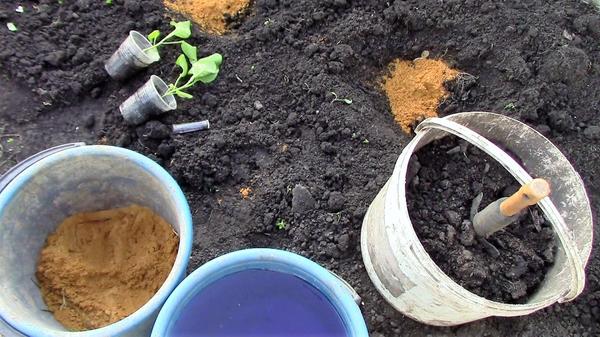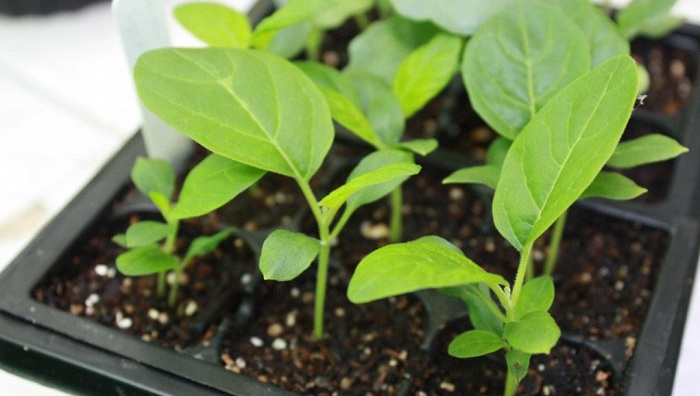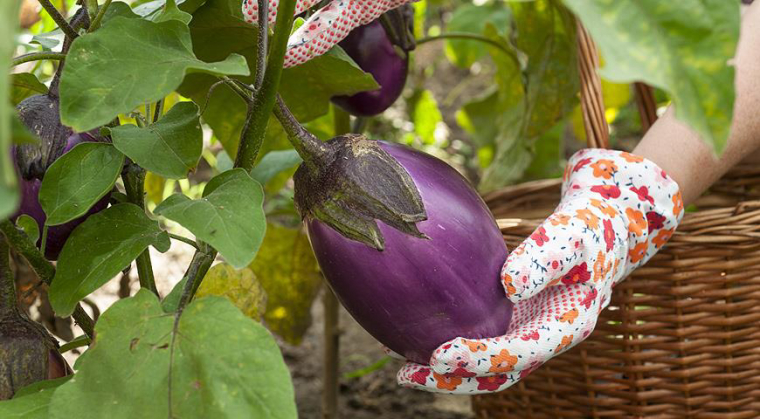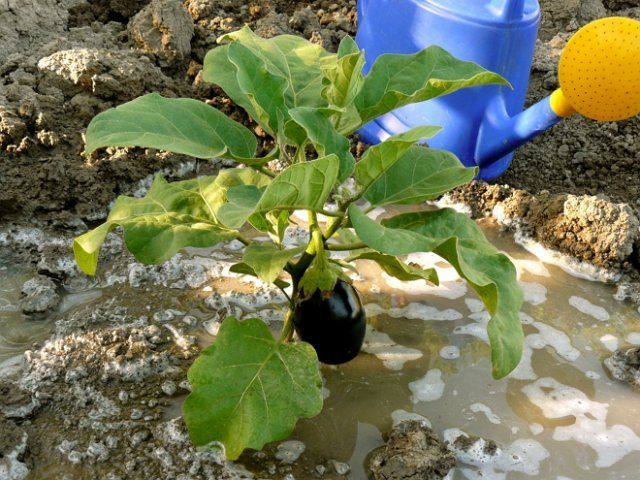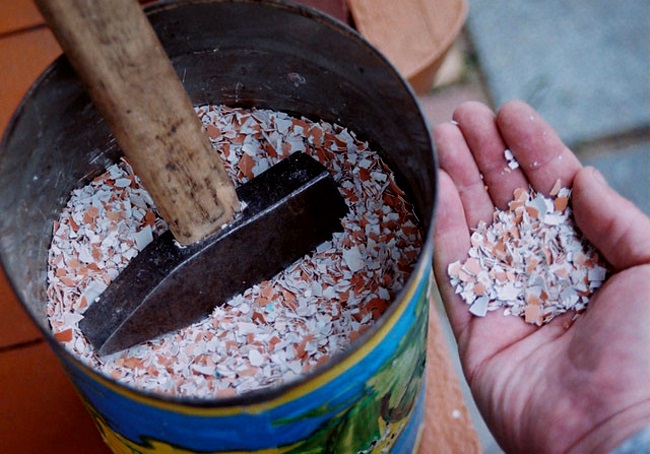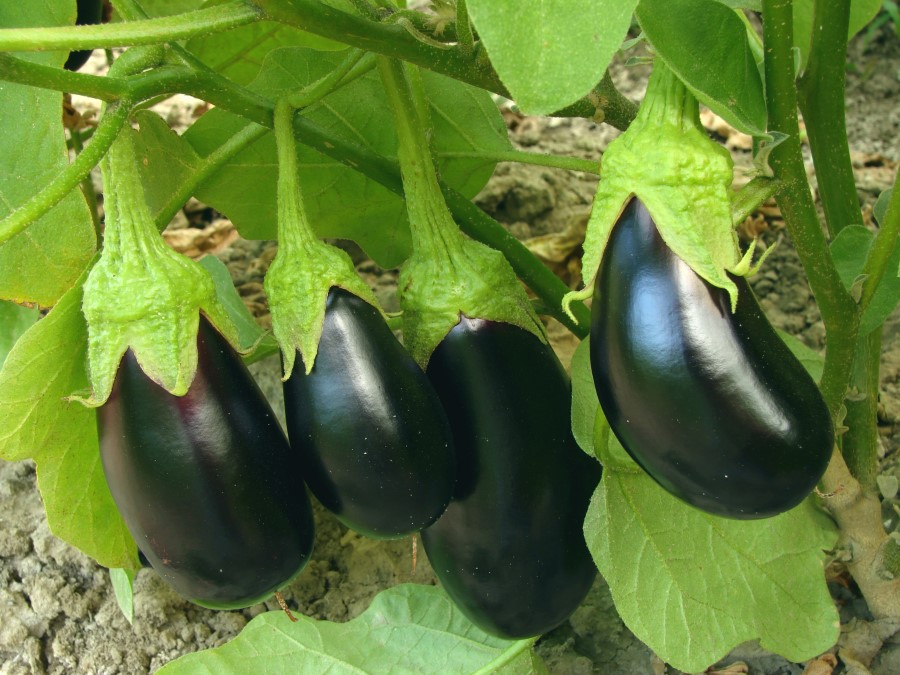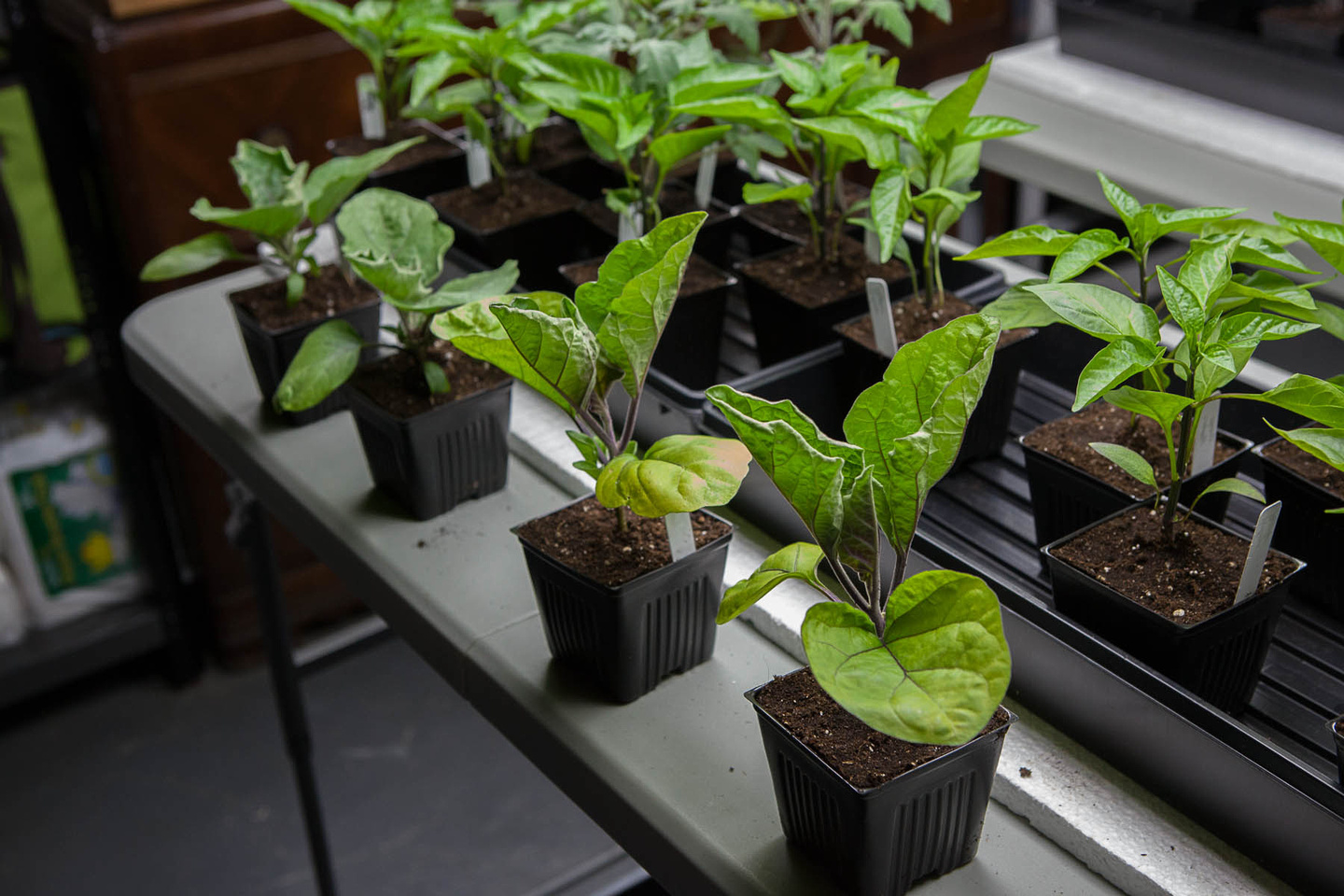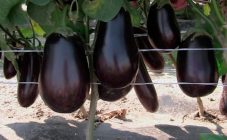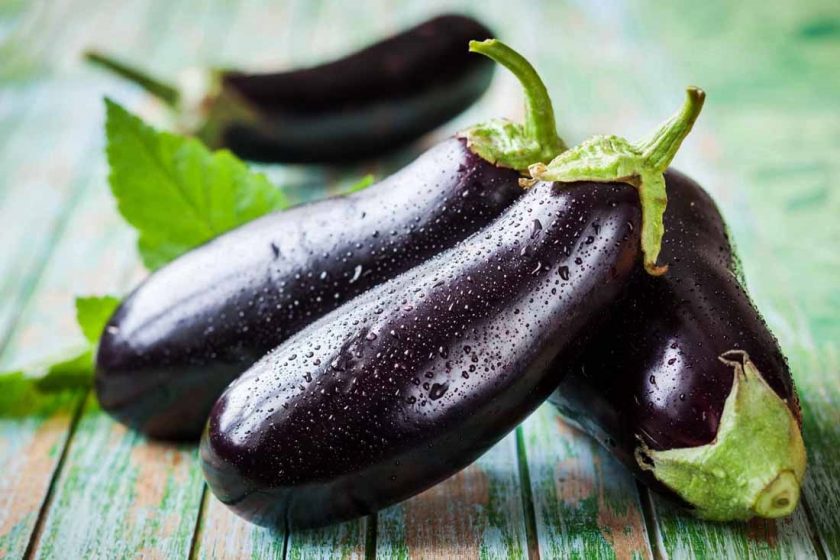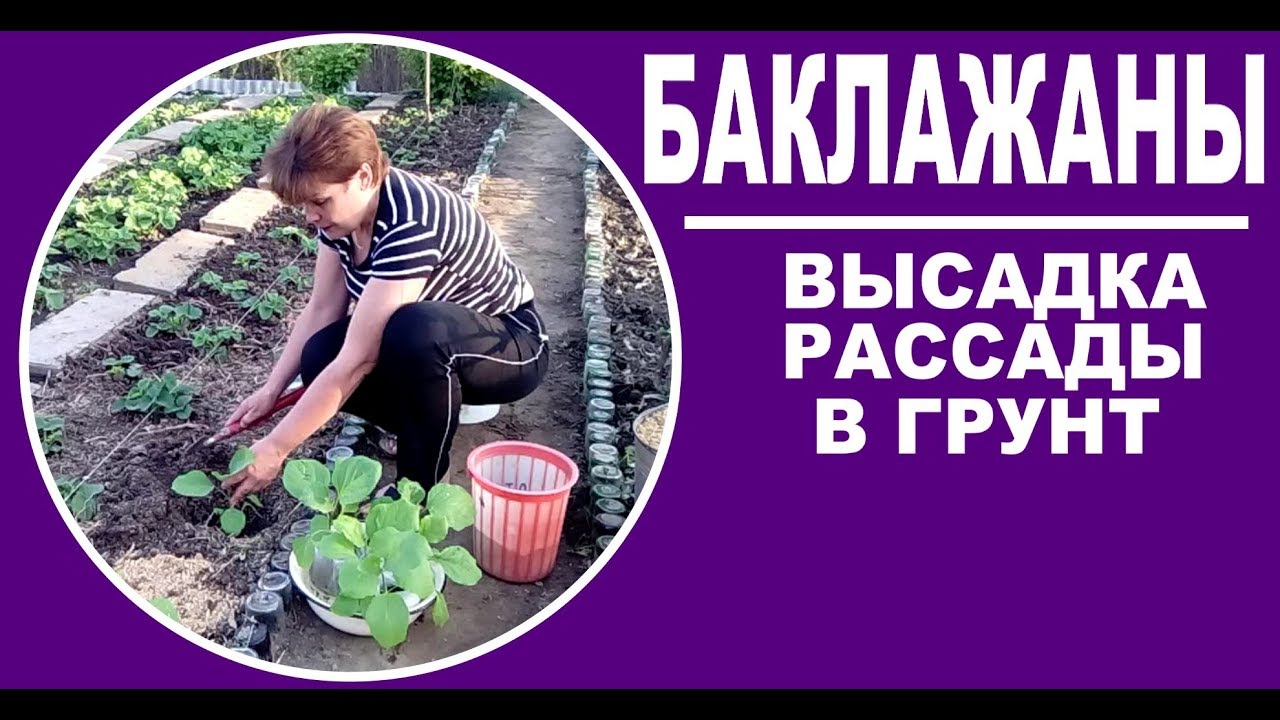Content:
Eggplants belong to special crops. To get a good harvest of blue from the vegetable grower, especially careful care is required. Yesterday, green and perfectly healthy eggplant bushes today can throw off most of the ovaries at one moment and dry out. Poor soils are often the cause of diseases in this culture. Is it possible to change the situation with top dressing? And how can you fertilize eggplants? This is covered in this article.
The most suitable conditions for growing eggplants in the open field
There are a lot of varieties and hybrids of eggplant, all representatives of this garden culture need similar conditions for good growth and fruiting, but there are some differences. For cultivation in the open field, varieties suitable for their region are selected. No matter how attractive the hybrid that manufacturers recommend for the Crimea and Krasnodar Territory, it is not worth buying them for the vegetable grower of the Amur Region.
Preparing the garden
The blue ones love well-fertilized soil. The eggplant site is being prepared in the fall. After harvesting the remnants of fruiting plants from the site, organic matter is scattered over all the beds:
- deciduous humus;
- compost;
- manure;
- chicken droppings.
The garden is dug up so that all organic fertilizers are under a layer of earth. In the spring, the beds are weeded and the soil is dug again. Before sowing seeds, the beds are preventively treated against pests and pathological fungi.
Before planting seedlings on garden beds, the land is treated with antiseptics, it can be:
- manganese solution;
- infusion of garlic;
- solution of iodine and brilliant green.
The soil can be irrigated with any antiseptic agent purchased from a specialized store. In addition, vegetable growers recommend pouring at least 1 liter of boiling water into each hole an hour before planting seedlings. Preventive soil treatment will help to avoid infection of plants with fungi and infectious diseases.
Above the insulated flower beds, wire or plastic arcs are installed on which a film shelter is attached. In the daytime, the film is opened to ventilate the beds. The shelter is removed when the warm weather is fully established.
Seedling and seedling growing
Blue ones are most often cultivated in seedlings. Eggplant seedlings can be grown in a greenhouse or on a windowsill. Eggplant seeds treated with a manganese solution are planted to germinate in peat cubes. Heat-loving plants are transplanted to garden beds when the soil warms up well and the threat of recurrent spring frosts has passed.
In the southern regions, eggplants can be grown in a seedless way. You can sow blue seeds on a garden bed after the soil temperature warms up to +14 degrees.
Crops are watered with warm water from a spray bottle about two to three times a week. You cannot water the seedlings from a bucket or hose. Plants are planted in the place of constant growth at the age of 70-80 days. If the eggplants are transplanted to an open bed earlier, the yield will be halved.
All varieties of eggplants, except for dwarf ones, must form. Bush shaping can be:
- in one stem;
- in two stems;
- in three to four stems.
For each plant in the garden, its own pruning option is selected. If the seedlings were weakened by a pick and were taken for a long time, then molding into one stem is suitable for such blue ones.
If there is little seedling material, then each plant in a row is formed into 3-4 stems. The result is a fairly voluminous bush.
What is the end result of pinching eggplants? The plant, freed from unnecessary branches and leaves, directs all its vitality to the formation of ovaries and the ripening of fruits.
Why feed eggplants outdoors
Vegetables growing in a garden bed need a lot of organic and mineral fertilizers. The stock of nutrients contained in the soil quickly ends, and a lot of nutrition is needed for the formation of fruits.
The lack of minerals in the soil leads to the fact that the leaves on the bushes begin to turn yellow and wither, and the growth of the plant stops. With a lack of nutrients, the eggplant begins to grow due to its lower leaves and the depleted plant dies.
Soils with a high content of organic and mineral nutrients are suitable for eggplants. For proper growth and formation of plants, the blue ones are fed at least 6 times.
You need to start feeding eggplants already at the stage of growing seedlings. How to feed eggplant seedlings growing in a greenhouse in a garden bed? For young sprouts, organic matter and mineral fertilizers need to be alternated.
For quick assimilation, fertilizers must be dissolved in water. Complexes with a high nitrogen content are stopped until ovaries form.
How to fertilize to feed, water the eggplant
Feeding eggplants when grown in the open field is carried out throughout the entire life cycle of the bush. For the first time, food for cultivated plants is added to the soil mixture intended for growing seedlings.
Nutrients necessary for good growth of seedlings:
- superphosphate;
- wood ash;
- products high in potassium.
Correctly selected composition of useful admixtures guarantees good growth of emerging seedlings.
How to feed eggplant seedlings so that their stems are plump? Young shoots are most active in gaining green mass on manure solutions and mineral complexes with a high content of phosphorus and nitrogen.
How to feed eggplant seedlings after transplanting to an open garden bed? The next time the blue ones feed immediately after transplanting to a place of constant growth in the garden, if before that food was not introduced into the ground during the formation of the first two leaves on the stem. The choice of fertilizer for blue seedlings is done by visual inspection of seedlings for its quality. So that the roots can actively develop, potassium and superphosphate are added to the soil.
Top dressing is done like this:
- 1 tsp potassium sulfate and 2 tbsp. tablespoons of superphosphate are diluted in a bucket of water.
- 500 ml of the resulting mixture is poured under the root of each bush.
What if the seedlings look weakened, and the color of their foliage is faded and unsaturated. Such sprouts must be watered with an aqueous solution of urea - this component helps to retain moisture in the soil base.
The solution is made like this:
- Dissolve 1 tbsp in a bucket of water. l. urea.
- Add 1 glass of mullein to the resulting composition.
- The solution is left to infuse for a day.
- A half-liter can of the resulting mixture is poured under the root of each plant.
The active growth of the plant can be provoked by the infusion of eggshells containing large amounts of calcium and potassium. This infusion is prepared for several days. You can nourish the seedlings with brewed black tea and cut herbs.
Leaf top dressing helps well. A liquid solution of nutrients is sprayed onto the bushes with a spray bottle. Certain types of fertilizers can and will protect plants from infection and pests.
Once every 10 days, the soil in the garden where the eggplants grow can be watered with a solution of the infusion of garlic or onion peel, prepared according to the folk recipe.
The infusion is made like this:
- A full liter jar of onion husks is brewed in a bucket of boiling water.
- The brew is infused for about 12 hours.
- The resulting infusion is diluted 1 to 6 and poured over the beds.
You can irrigate eggplant bushes completely with onion infusion. Applying such funds to the crown and stems of plants, you need to adhere to the following rules:
- the nutrient mixture should be less concentrated than for root application;
- the solution is heated to 20-25 degrees before use;
- leaves are watered on both sides.
A good antiseptic and feeding at the same time is a solution of iodine with milk. They do this composition like this:
- 1 liter of milk is diluted in a bucket of water.
- Add 15 drops of iodine tincture to the resulting composition.
- The resulting mixture is sprinkled on each leaf from below and from above.
If the grower does not have a lot of time to create homemade types of feeding, what should be done in this case? Specialized stores offer complex fertilizers that combine all the necessary minerals. You can also buy organic compounds made from lake silt, peat, fishmeal there. The Biohumus remedy has a good reputation among gardeners.
Tips from experienced gardeners: what is the best fertilization in specific cases
Experienced gardeners advise at different stages of the life of an eggplant bush to feed it with minerals and organics suitable for this period.
For example, complexes with a high nitrogen content can be fed to plants only before the formation of ovaries.
How can eggplants be fed after a pick
During transplanting, the root system of the plant is stressed. To provide the blue bushes with additional nutrition, which gives strength for rapid growth and rooting, you can add top dressing to the soil. How to feed eggplants after planting in the ground?
In order for the plants to grow actively and root well, mineral complexes with phosphorus and nitrogen are introduced into the soil. These fertilizers can be bought at the store, and at your dacha you can make a mixture of tincture of nettle and ordinary ash. This tool is prepared like this:
- 1 kg of green mass of nettle (mown grass is suitable) pour 10 liters of boiling water.
- Add 1 kg of ash to a container with brewed grass, cover with a lid and let the mixture brew.
- After the brew has cooled down, it is poured 500 liters at the root of the eggplant.
After transplanting to a new place, seedlings can be fed with urea with potassium permanganate. This mixture will work even more efficiently if ash is added to it.
Summer residents speak well of eggplant dressings made on the basis of baker's yeast and ash.
How to feed eggplants during flowering and fruiting
Blooming and fruiting eggplant bushes require stimulating feeding.
Chemical preparations and mineral fertilizers are used very carefully during this period. Without fear of harm, garden crops can be fed with the following means:
- fermented infusion of cut herbs (infused until the fermentation process stops);
- infusion of crushed eggshells from chicken eggs;
- garlic infusion solution;
- slurry solution.
The infusion of skokrlupa is prepared as follows:
- Shells from 10 eggs are crushed.
- Pour 3 liters of boiling water.
- Let it brew for 7 days.
Do eggplants like compost and manure? Blue, like any other garden crops, respond very well to natural organic feeding. Organic agricultural products are completely safe for humans and animals.
Suddenly, the leaves on the blue bushes turned yellow and drooped, what can be done in this situation? The first step is to find out the reason for the yellowing of the foliage. There may be several of them:
- improper watering;
- lack of nutrients in the soil;
- drafts;
- sunburn;
- infectious diseases;
- natural aging of the bush;
- pests.
If the foliage has turned yellow due to lack of nutrition and has just begun to appear, you can treat the bushes with a solution of infusion of onion peels and garlic. With this tool, you can spray the beds for prevention, without waiting for the plants to get sick.
You can improve the condition of the bush with the help of foliar dressing.
For this purpose, the aerial part of the plant can be sprinkled with herbal infusions:
- dandelion;
- nettle;
- swans.
Garden crops require good maintenance, especially eggplant. Timely fertilizers applied to the soil will help to avoid crop loss and plant death.
